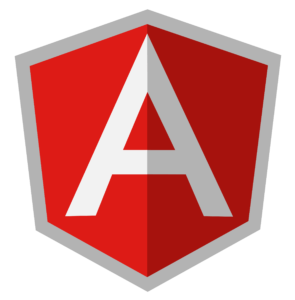
Angular Training
This Course Covers Version(s): Angular 12
- Live Class with Instructor
- Digital Course Manual
- Hands-on Labs
- Up to 1 Year Access to Recorded Course
In this hands-on Angular Training course, students will obtain the foundation to get up and running with the latest version of Angular. Students will begin by learning about TypeScript – the language used in Angular. Students will then move on to create their first app, use the built-in components of Angular and then begin creating their own components. Next, the course moves onto intermediate concepts like using forms, APIs, routing to different pages and using Dependency Injection to organize code. In addition, students will learn how to test and deploy their Angular applications. This course is up-to-date through Angular 12.
After successful completion of this course, students will be able to:
- Understand how single-page web application architectures are different than traditional web application architectures
- Use new JavaScript (ES6) language features including Classes, Modules, and Arrow Functions
- Use new TypeScript language features including Types, Decorators, Interfaces, and Generics
- Learn Angular coding and architecture best practices including project layout and using container and presentation components
- Understand and use Angular model-driven forms, observables, dependency injection, and routing
- Communicate with a backend server using Angular’s HttpClient to load and save data
- Configure the router and navigate between components
- Setup new projects from scratch using the Angular CLI
- Scaffold modules, components, services, models, routes, and unit tests in accordance with best practices using the Angular CLI
- Build and deploy an application to production using the Angular CLI
- Understand Ivy: the New Compilaton & Rendering Pipeline
Students should have a familiarity with basic application development concepts.
This course is designed for students who either have no previous experience with Angular or students who have some experience using a previous version of Angular and want to get up to speed on the latest version of Angular.
- TypeScript and ECMAScript 6 (ES6) Fundamentals
- TypeScript Installation, Configuration & Compilation
- Type Annotations
- Classes
- Scoping using let, var, and const Keywords
- Arrow Functions
- ES Modules
- Decorators
- Template Literals
- Spread Syntax and Rest Parameters
- Destructuring
- Angular Overview
- Benefits of Building using Angular
- Understanding Angular Versions
- Single-page Web Application Architectures vs. Traditional Server-side Web Application Architectures
- Angular Style Guide
- Angular Architecture
- Angular Compared to Other JavaScript Libraries and Frameworks (React, VueJS, etc…)
- Your First Angular Application
- Components
- Understanding Components
- Component Properties & Methods
- Templates: Inline, Multi-line, and External with Component-relative Paths
- Angular Modules (NgModule)
- Angular Modules vs. ES Modules
- Organizing your code into Feature Modules
- Project Set-Up (Using the Angular CLI)
- Angular CLI Features
- Creating a New Project (CLI Prompts)
- Generating Code
- Customizing the Angular CLI
- Data Binding
- Interpolation
- Property binding
- Event binding
- Two-way data binding
- Directives
- Structural: ngFor, ngIf, ngSwitch
- Attribute: ngClass, ngStyle
- Pipes
- Built-in Pipes: Using, Passing Parameters, Chaining
- Advanced Components
- Component Communication using @Input, @Output
- Component Architecture
- Component Styles
- Component Lifecycle Hooks
- Evaluating UI Component Frameworks & Libraries
- Services & Dependency Injection
- Using a service to access data
- Using a service to encapsulate business logic
- Understanding the scope of services
- Dependency Injection
- Understanding Dependency Injection
- Angular’s Dependency Injection System
- Registering
- Injecting
- Model-driven Forms (Reactive Forms)
- Importing the ReactiveFormsModule
- FormControl, FormGroup, and AbstractControl
- Binding DOM Elements to FormGroups and FormControls
- Validation Rules, Messages, and Styles
- Refactoring Reactive Forms for Reuse
- Custom Validators
- Communicating with the Server using the HttpClient Service
- Deciding between Promises or Observables (RxJS)
- Making an HTTP GET Request
- Sending data to the server using Http POST and PUT Requests
- Issuing an HTTP DELETE Request
- Intercepting Requests and Responses
- Router
- Importing the RouterModule
- Configuring Routes
- Displaying Components using a RouterOutlet
- Navigating declaratively with RouterLink
- Navigating with code using the Router
- Accessing parameters using ActivatedRoute
- Deploying an Angular Application to Production
- Building an application using the Angular CLI
- Differential loading: creating a modern build (ES2015) and a legacy build (ES5)
- Deploying to a web server
- Ivy: Next-Generation Compilaton & Rendering Pipeline
- Understanding Ivy
- Status: Is Ivy Ready? (opt-in preview)
- Previewing Ivy in a new Project
- Previewing Ivy in an existing Project
- Upgrading to the latest version of Angular from earlier versions
- x and above
- Update Guide
- Deprecation Guide
This course does not align to a specific exam or certification.
- For Private Groups as small as 2 people.
- Live, Instructor-led Online or Onsite Class for your group.
- Customizable to your needs.